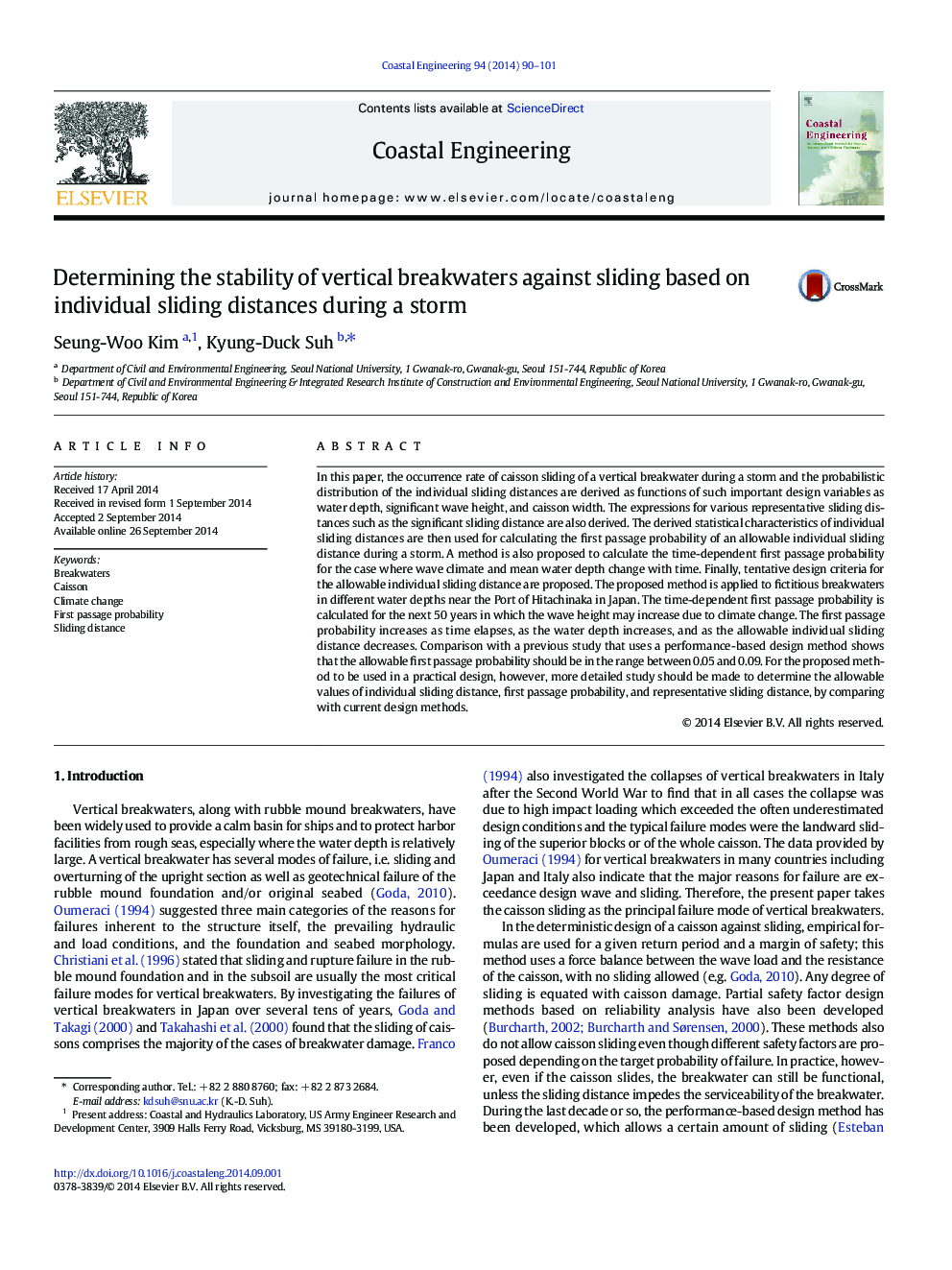| Article ID | Journal | Published Year | Pages | File Type |
|---|---|---|---|---|
| 1720731 | Coastal Engineering | 2014 | 12 Pages |
•Occurrence rate of caisson sliding of a vertical breakwater during a storm is derived.•Probabilistic distribution of individual sliding distances is derived.•Expressions for various representative sliding distances are derived.•First passage probability of an allowable individual sliding distance is calculated.•First passage probability is calculated for the next 50 years of wave height increase.
In this paper, the occurrence rate of caisson sliding of a vertical breakwater during a storm and the probabilistic distribution of the individual sliding distances are derived as functions of such important design variables as water depth, significant wave height, and caisson width. The expressions for various representative sliding distances such as the significant sliding distance are also derived. The derived statistical characteristics of individual sliding distances are then used for calculating the first passage probability of an allowable individual sliding distance during a storm. A method is also proposed to calculate the time-dependent first passage probability for the case where wave climate and mean water depth change with time. Finally, tentative design criteria for the allowable individual sliding distance are proposed. The proposed method is applied to fictitious breakwaters in different water depths near the Port of Hitachinaka in Japan. The time-dependent first passage probability is calculated for the next 50 years in which the wave height may increase due to climate change. The first passage probability increases as time elapses, as the water depth increases, and as the allowable individual sliding distance decreases. Comparison with a previous study that uses a performance-based design method shows that the allowable first passage probability should be in the range between 0.05 and 0.09. For the proposed method to be used in a practical design, however, more detailed study should be made to determine the allowable values of individual sliding distance, first passage probability, and representative sliding distance, by comparing with current design methods.
